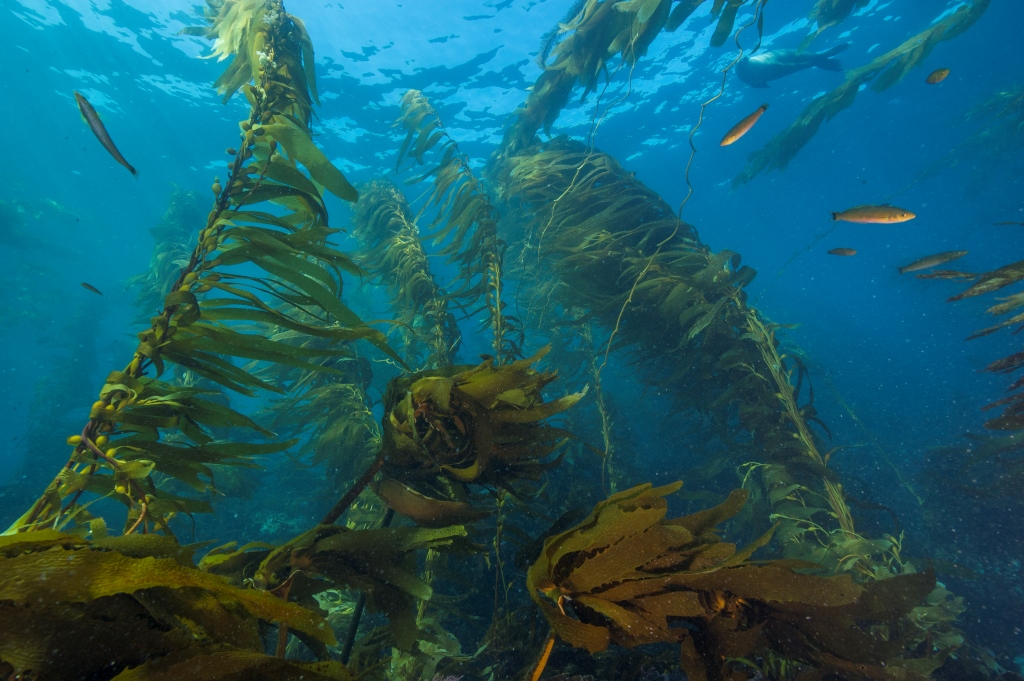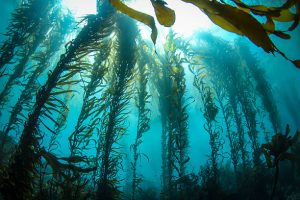Synchrony in Giant Kelp
 Giant kelp forests provide a three-dimensional, underwater home to thousands of species of invertebrates, fish, and other algae. Reaching heights of more than 100 feet or 30 meters, these forests offer seabirds and marine mammals like sea lions, sea otters and gray whales shelter from predators and storms. Giant kelp can also be used by humans for food and as a binding agent in products like ice cream, cereal, yogurt, toothpaste, and lotion.
Giant kelp forests provide a three-dimensional, underwater home to thousands of species of invertebrates, fish, and other algae. Reaching heights of more than 100 feet or 30 meters, these forests offer seabirds and marine mammals like sea lions, sea otters and gray whales shelter from predators and storms. Giant kelp can also be used by humans for food and as a binding agent in products like ice cream, cereal, yogurt, toothpaste, and lotion.
While preferring clear and cold environments, kelp forests may disappear and reappear based on various oceanographic conditions. Warmer than normal summers, seasonal changes to currents, or storms can weaken or wipe out large areas of giant kelp. When this happens, the population size of the community of invertebrates and fish that depend on this ecosystem is reduced. Destructive fishing practices, coastal pollution, and accidental damage caused by boat entanglement also negatively affect kelp forests.

With funding from the National Science Foundation (NSF), researchers are investigating kelp canopy dynamics for inclusion in synchrony models. This work involves accessing the kelp canopy biomass and area time series that were developed for the Santa Barbara Coastal Long Term Ecological Research project (SBC LTER), developing a list of kelp sites, and creating multiple summary statistics of kelp dynamics at each of these sites.
Specific Objectives:
1) Examine spatiotemporal data of satellite-based giant kelp canopy biomass estimates across the study area. This will involve validation of biomass estimates using publicly available diver measurements from the SBC LTER and producing time series of potential biomass drivers of synchrony such as seawater temperature, nitrate concentration, urchin density, and wave disturbance from satellite observations and model outputs.
2) Organize diver estimates of rocky reef community dynamics for statistical analyses. These data have been collected for 20 years by the SBC LTER and other long-term monitoring efforts.
3) Communicate satellite-based giant kelp canopy biomass estimates with measurements of giant kelp beach wrack through sites along the Southern California coast. Beach wrack data will also be obtained from the SBC LTER.

